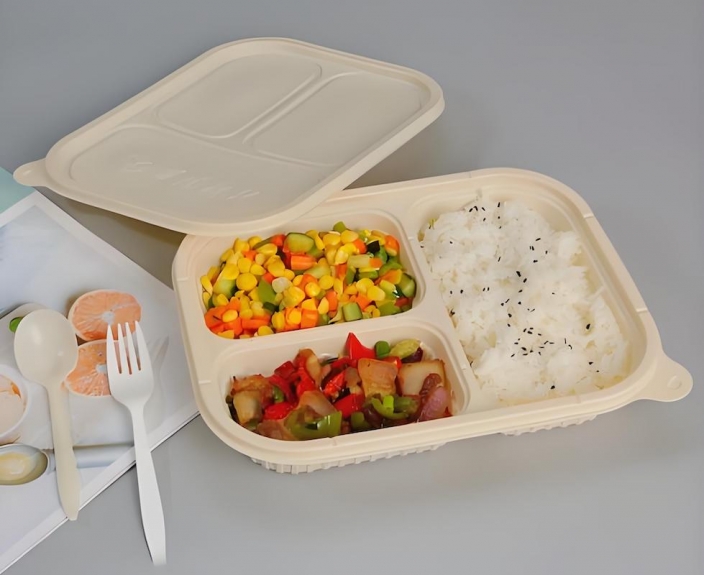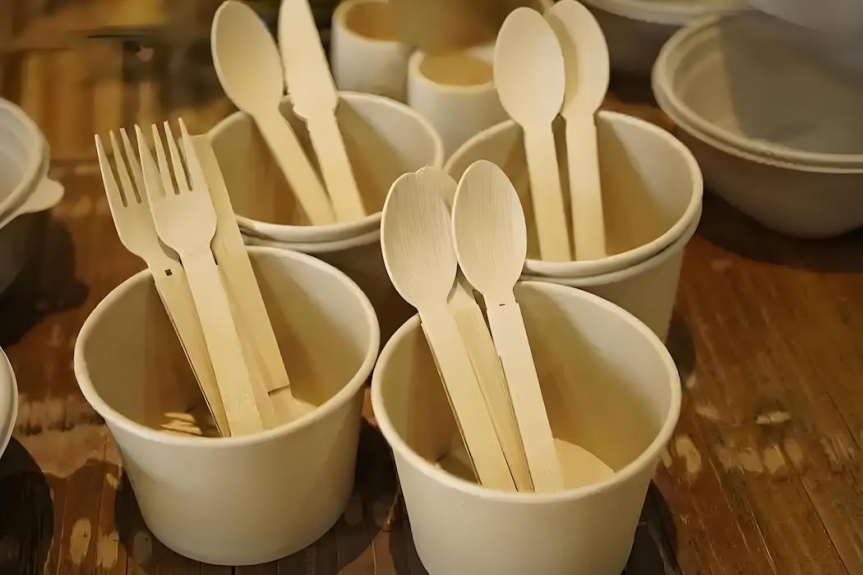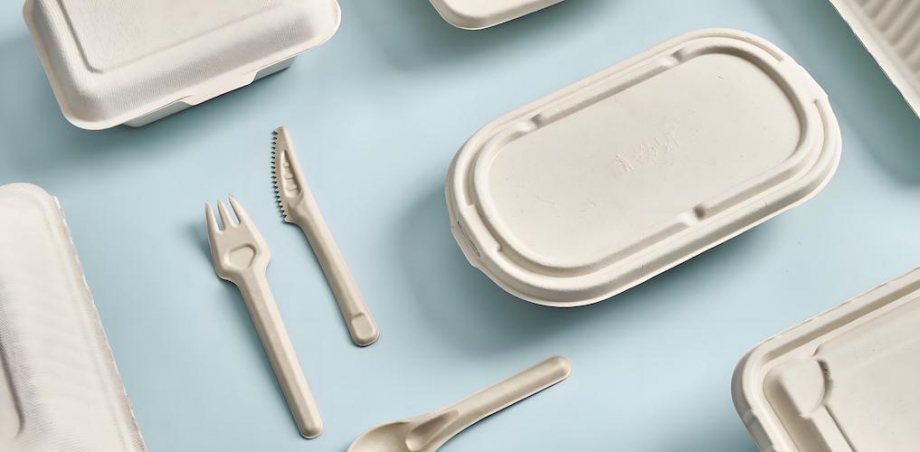In recent years, the demand for eco-friendly packaging solutions has surged, particularly in the food service industry. Custom disposable lunch boxes made from sustainable materials are becoming increasingly popular as businesses and consumers alike seek to reduce their environmental impact. Among the most discussed materials for these products are sugarcane pulp and bamboo pulp. This article will explore the characteristics, advantages, and disadvantages of both materials to determine which is better suited for custom disposable lunch boxes.
Understanding Sugarcane Pulp
What is Sugarcane Pulp?
Sugarcane pulp, also known as bagasse, is the fibrous residue left after the extraction of juice from sugarcane. This byproduct is often considered waste, but it can be repurposed into a variety of products, including disposable food containers. The process of converting sugarcane pulp into packaging involves drying and processing the fibers into a moldable material. This transformation not only helps in waste management but also contributes to a circular economy where byproducts are utilized effectively, reducing the need for virgin materials.

Advantages of Sugarcane Pulp
Biodegradability: Sugarcane pulp is fully biodegradable and compostable, breaking down naturally in the environment within a few months. This makes it an excellent choice for eco-conscious consumers and businesses. The rapid decomposition of sugarcane pulp means that it does not contribute to landfill waste, which is a significant concern in today's environmental landscape.
Renewable Resource: Sugarcane is a rapidly renewable resource, with the ability to grow back quickly after harvesting. This sustainability aspect is crucial in reducing the carbon footprint associated with packaging production. The cultivation of sugarcane can also support local economies, providing jobs and income for farmers, which adds a social sustainability dimension to its use.
Versatility: Sugarcane pulp can be molded into various shapes and sizes, making it suitable for a wide range of food packaging applications, including lunch boxes, plates, and bowls. This versatility allows manufacturers to create custom designs that meet specific customer needs, enhancing the appeal of the products.
Heat Resistance: Sugarcane pulp products can withstand high temperatures, making them suitable for both hot and cold food items. This feature is particularly important for lunch boxes that may contain warm meals. The ability to maintain structural integrity under heat ensures that the food remains safe and appetizing for consumers.
Disadvantages of Sugarcane Pulp
Cost: While sugarcane pulp is a sustainable option, it can be more expensive than traditional plastic or Styrofoam packaging. This cost may be a consideration for businesses looking to minimize expenses. The higher production costs can impact pricing strategies, potentially making it less competitive in price-sensitive markets.
Durability: Although sugarcane pulp is generally strong, it may not be as durable as some synthetic materials, particularly when exposed to moisture for extended periods. This limitation can affect the usability of lunch boxes in certain scenarios, such as when containing liquid-rich foods, which may lead to leaks or structural failure.

Understanding Bamboo Pulp
What is Bamboo Pulp?
Bamboo pulp is derived from the fibers of bamboo plants, which are known for their rapid growth and sustainability. The process of creating bamboo pulp involves harvesting the bamboo, processing it into fibers, and then forming those fibers into a moldable material suitable for packaging. Bamboo's fast growth rate and ability to thrive in diverse environments make it an attractive option for sustainable packaging solutions.
Advantages of Bamboo Pulp
Sustainability: Bamboo is one of the fastest-growing plants on Earth, capable of reaching maturity in just a few months. This rapid growth makes bamboo a highly sustainable resource for packaging. The cultivation of bamboo also requires less water and pesticides compared to traditional crops, further enhancing its environmental benefits.
Biodegradability: Like sugarcane pulp, bamboo pulp is also biodegradable and compostable, breaking down naturally in the environment without leaving harmful residues. This characteristic aligns with the growing consumer preference for products that do not contribute to long-term environmental pollution.
Natural Antimicrobial Properties: Bamboo has inherent antimicrobial properties, which can help reduce the risk of bacterial growth in food packaging. This feature is particularly beneficial for lunch boxes that may contain perishable items. The natural resistance to bacteria can enhance food safety and extend the shelf life of the packaged products.
Aesthetic Appeal: Bamboo pulp products often have a natural, rustic appearance that can enhance the presentation of food items, making them visually appealing to consumers. The unique texture and color of bamboo packaging can also serve as a marketing tool, attracting customers who appreciate eco-friendly and aesthetically pleasing products.
Disadvantages of Bamboo Pulp
Cost: Similar to sugarcane pulp, bamboo pulp can be more expensive than conventional packaging materials. The higher production costs may be a barrier for some businesses. Companies must weigh the benefits of sustainability against the financial implications, especially in competitive markets.
Limited Availability: Depending on the region, bamboo may not be as readily available as sugarcane, which could impact supply chains and production timelines. The geographical limitations of bamboo cultivation can lead to inconsistencies in supply, affecting manufacturers' ability to meet demand.

Comparing Sugarcane Pulp and Bamboo Pulp
Environmental Impact
Both sugarcane pulp and bamboo pulp are environmentally friendly options, but they have different impacts based on their sourcing and production processes. Sugarcane pulp utilizes a byproduct of sugar production, which helps reduce waste. In contrast, bamboo is a renewable resource that can be harvested sustainably without harming the environment. The choice between these materials can significantly influence a company's overall sustainability profile and its commitment to reducing environmental harm.
Performance in Food Packaging
When it comes to performance, both materials offer excellent heat resistance and biodegradability. However, sugarcane pulp may be slightly more versatile in terms of moldability, allowing for a wider range of product designs. Bamboo pulp, on the other hand, provides natural antimicrobial properties, which can be advantageous for food safety. The specific requirements of the food items being packaged will play a crucial role in determining which material is more suitable for a given application.
Cost Considerations
Cost is a significant factor for businesses when choosing packaging materials. Both sugarcane and bamboo pulps tend to be more expensive than traditional options. However, the long-term benefits of using sustainable materials, such as improved brand image and customer loyalty, may outweigh the initial costs. Companies that invest in eco-friendly packaging can differentiate themselves in the market, appealing to a growing segment of environmentally conscious consumers.
Conclusion
In the debate between sugarcane pulp and bamboo pulp for custom disposable lunch boxes, both materials present compelling advantages and some drawbacks. Sugarcane pulp is highly versatile and utilizes a waste product, while bamboo pulp offers rapid renewability and natural antimicrobial properties. Ultimately, the choice between the two will depend on specific business needs, budget constraints, and environmental goals.
As consumers continue to prioritize sustainability, businesses that invest in eco-friendly packaging solutions like sugarcane and bamboo pulps will likely find themselves at a competitive advantage in the market. By understanding the unique characteristics of each material, companies can make informed decisions that align with their values and the expectations of their customers. The future of packaging lies in sustainable practices, and choosing the right material is a crucial step toward a greener planet.

Frequently Asked Questions regarding Custom Disposable Lunch Boxes
1. What are the main differences between sugarcane pulp and bamboo pulp?
The main differences lie in their sourcing and properties. Sugarcane pulp is a byproduct of sugar production, making it a waste-utilizing material, while bamboo pulp is derived from the fast-growing bamboo plant. Sugarcane pulp is known for its versatility and heat resistance, whereas bamboo pulp has natural antimicrobial properties and a unique aesthetic appeal.
2. Are products made from sugarcane pulp and bamboo pulp biodegradable?
Yes, both sugarcane pulp and bamboo pulp products are biodegradable and compostable. They break down naturally in the environment, making them eco-friendly alternatives to traditional plastic packaging.
3. Which material is more cost-effective for businesses?
Both sugarcane pulp and bamboo pulp tend to be more expensive than conventional packaging materials like plastic or Styrofoam. The choice of material may depend on the specific business model and target market, as the long-term benefits of sustainability can justify the higher costs.
4. Can sugarcane pulp and bamboo pulp withstand hot food items?
Yes, both materials are designed to withstand high temperatures, making them suitable for packaging hot food items. This heat resistance is essential for maintaining the integrity of the lunch boxes when containing warm meals.
5. How do sugarcane pulp and bamboo pulp contribute to sustainability?
Sugarcane pulp contributes to sustainability by utilizing a byproduct of sugar production, reducing waste. Bamboo pulp is derived from a rapidly renewable resource that requires less water and pesticides. Both materials help reduce reliance on fossil fuels and minimize environmental impact, aligning with the growing demand for sustainable packaging solutions.






